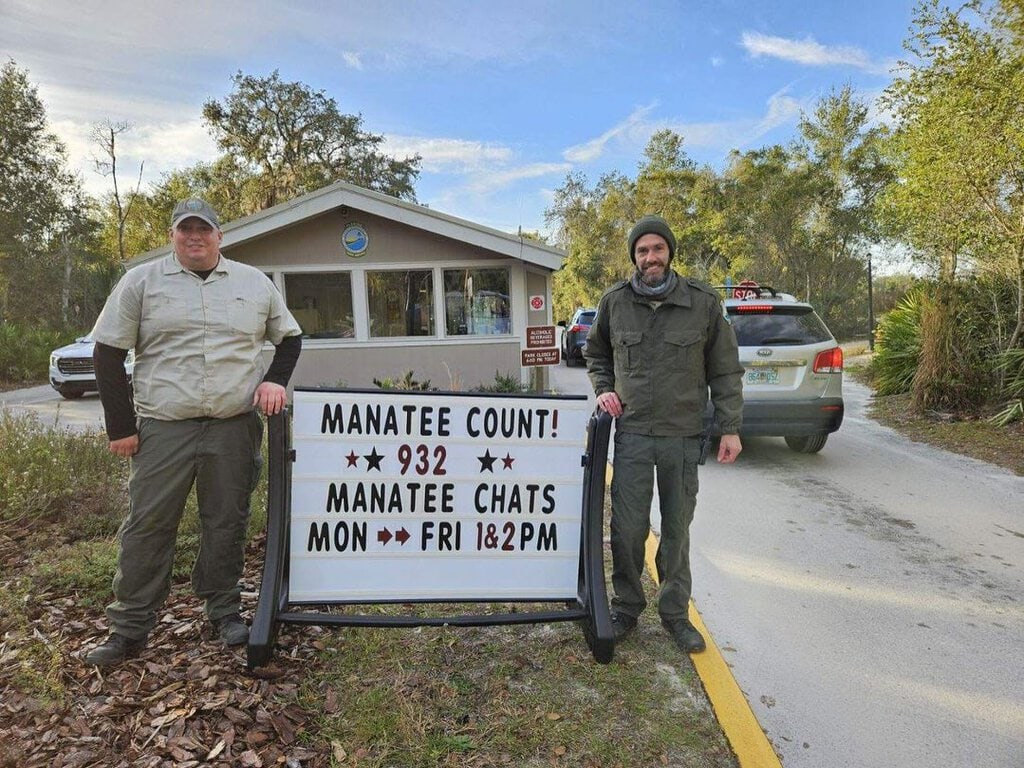
Witnessing some of the largest aggregations ever recorded at Florida’s Blue Spring State Park, visitors have been treated to the heartwarming sight of hundreds of threatened manatees, fondly referred to as “sea cows.” Throughout January, these gentle giants were seen seeking refuge in the park’s warm springs, creating a spectacle as they huddled and rested in the shallow turquoise waters near riverbanks and mangrove trees.
932 Manatees Break Records
On January 21st, a record-breaking morning at Blue Spring State Park saw 932 manatees, surpassing the previous monthly record by nearly 200 animals. Celebrating the achievement, the park shared on Facebook, “Record-breaking morning at Blue Spring State Park. Happy manatee season, everyone!”
Beyond the historic numbers, the scene holds practical significance as manatees, with a preference for calm waters, employ huddling and sharing body heat as a vital survival strategy in Florida’s cool winter months.
Demystifying the Marine Mammals
Contrary to popular belief, manatees are not sluggish due to laziness but are actively conserving energy, being relatively lean creatures. Despite the appearance of insulation from a thick blubber layer, they possess only about one inch of fat.

Coupled with slow metabolisms and warm-blooded nature, manatees are susceptible during cold snaps, like those recently experienced in Florida. Enduring temperatures below 68°F becomes a challenge, and when water temperatures drop below 60°F, they face the risk of cold stress, potentially leading to insufficient blood flow to the tail or fins and flaking skin.
A Manatee Haven
In a record-breaking scenario, temperatures in the St. John’s River, a significant manatee hotspot with channels throughout the park, plummeted to a near-deadly 58°F. Confronted with this perilous situation, manatees rapidly migrated to the park’s springs.
The springs have a steady temperature of 72°F year-round. Blue Spring State Park has evolved into a crucial sanctuary for manatees, experiencing a remarkable population surge from just 36 in the 1970s to consistently exceeding 700 today, as reported by NPR.
The Manatee Prognosis
Despite the manatee population in Florida increasing to between 7,000 and 11,000 — from 1,000 — 50 years ago, the species remains classified as threatened under the Endangered Species Act. With over 500 manatee deaths in 2023 and ongoing challenges, some advocate reclassifying them as endangered.
Pollution and toxic algal blooms have drastically reduced seagrass, manatees’ primary food source, leading to starvation. Boat strikes pose a significant threat. Blue Spring State Park, with its clear waters and food abundance, stands as a rare winter sanctuary where watercraft are prohibited.